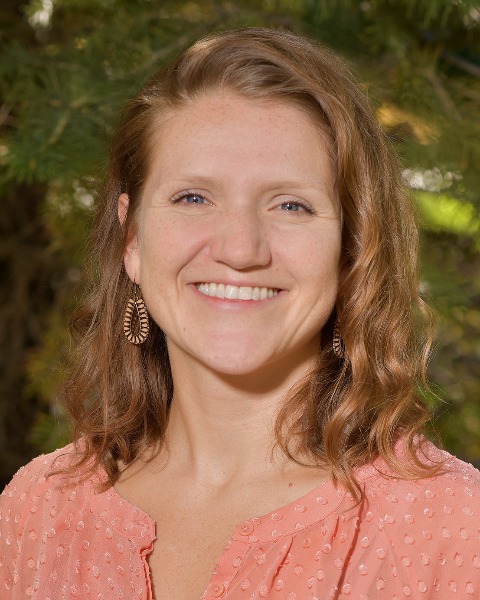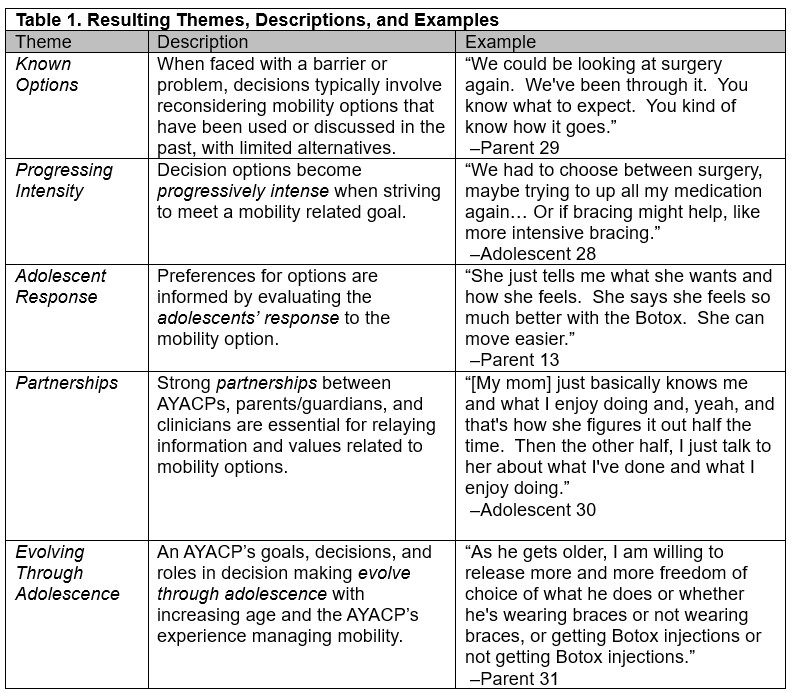Adolescent Medicine 5: Potpourri
Session: Adolescent Medicine 5: Potpourri
137 - Decision Making about Mobility Interventions from the Perspective of Adolescents with Cerebral Palsy and Parents
Monday, April 28, 2025
7:00am - 9:15am HST
Publication Number: 137.4217
Chelsey B. Anderson, Cincinnati Children's Hospital, Cincinnati, OH, United States; Michelle Gorecki, Cincinnati Children's Hospital Medical Center, Cincinnati, OH, United States; Amy F. Bailes, cincinnati children's hospita, cincinnati, OH, United States; Jilda Vargus-Adams, University of Cincinnati College of Medicine, Cincinnati, OH, United States; Ellen Lipstein, Cincinnati Children's Hospital Medical Center, Cincinnati, OH, United States

Chelsey B. Anderson, PhD (she/her/hers)
T32 Academic General Pediatrics Research Fellow
Cincinnati Children's Hospital
Cincinnati, Ohio, United States
Presenting Author(s)
Background: Adolescents and young adults with cerebral palsy (AYACP) often experience functional decline and new mobility healthcare needs. Involving AYACP in shared decision making (SDM) may improve patient and health outcomes, and promote the development of skills for transitioning to adult care. However, little is known about how mobility health decisions are made for AYACP.
Objective: To understand mobility health decisions and the decision-making process from the perspective of AYACP and parents/guardians of AYACP.
Design/Methods: We conducted a qualitative study with AYACP ages 13-21 years who were able to verbally communicate, and parents/guardians of AYACP. Eligible participants received cerebral palsy mobility care within the prior year at a large academic children’s hospital. We continued recruitment until achieving thematic saturation. We conducted, audio recorded, and transcribed individual 1 hour interviews via phone or video conference, using a semi-structured interview guide. Interview questions explored AYACP and parent/guardian perceptions associated with discussing decisions, goals, options, forming preferences, and managing conflict in decisions. Two researchers established a codebook using both inductive and deductive coding. We used thematic content analysis for all transcripts to identify opportunities for supporting shared decision making between parents/guardians and AYACP.
Results: 15 adolescents (median age 17 years, 60% male) and 15 parents/guardians (13% male) participated. We identified five themes related to decision making for mobility interventions: known options, and progressing intensity, adolescent response, partnerships, and evolving through adolescence (Table 1). The resulting themes suggest that SDM support would be beneficial when discussing options and forming AYACP preferences for mobility interventions. Additionally, strong partnerships between AYACPs, their parents/guardians, and their clinicians are important for supporting SDM. Finally, supporting the AYACP’s evolving role in decisions is essential for building AYACP independence in decision making.
Conclusion(s): This work illuminates the lack of SDM and the need for structured decision support and information about new options as AYACPs progress through adolescence. Future SDM efforts should foster partnerships between AYACPs, parents/guardians, and clinicians, and account for the adolescent’s emerging autonomy, to promote adolescent participation in decisions.
Table 1. Resulting Themes, Descriptions, and Examples


